4 LinkedIn Best Practices to Become a Better Networker
/LinkedIn offers powerful ways to expand a professional network if you learn how to master its possibilities
LinkedIn is the global leader of professional social networking platforms. Chances are you are on it but are you using it to its capacity?
LinkedIn turns 18 years old this year, and it’s grown to 256 million members in 200 countries and regions in the past (almost) two decades. Another fun statistic: “Three people are hired through LinkedIn every minute.”
Given its prominence, the platform is a tool for job seekers at all stages of their careers. But it’s also a powerful medium for enhancing professional experience even if you’re happily employed. Here are some tips for using LinkedIn to improve your networking—for whatever purpose you choose.
1. Begin by making an impressive first impression
This is LinkedIn 101: A profile page is your first chance to make a meaningful connection, so put some effort into it and update it frequently. Employ a professional-looking headshot and use the whole page to develop your personal brand.
2. Follow proper LinkedIn etiquette
It's essential to be a good citizen of LinkedIn and familiarize yourself with some well-established (but not always followed) behavioral standards. Breaking some rules — like adding connection email addresses to a marketing database without explicitly asking permission — can get you into legal trouble. Violating others just flags you as a norm-breaker or, worse, a jerk.
Here are some essential LinkedIn etiquette tips:
Be personable, but don’t get too personal. Send personalized messages to people to connect but maintain a professional demeanor. If you wouldn’t say it in the workplace, it’s probably not a good topic for a LinkedIn exchange.
Stay focused on professional topics. No one on LinkedIn cares what you ate for lunch, so save those kinds of posts for another platform.
Make sure your outreach passes the relevance test. Messaging people out of the blue without a clear purpose or connection is the LinkedIn version of SPAM. If you are contacting a stranger, be sure you have something relevant to contribute.
Respond promptly to invitations and inquiries. It’s just the polite thing to do. Set alerts that notify you and make it a habit to get back to people soon after they reach out.
3. Work those connections
LinkedIn is most effective as a networking tool when used to build high-quality connections among people who might not otherwise cross paths. The key to making these introductions is growing an extensive virtual network from existing contacts.
Each of your personal or professional contacts likely has many contacts, who also have many connections. The LinkedIn membership structure allows you to access these third-level contacts and have exchanges with them. You can start by building relationships with “shared” connections, those people with whom you have contacts and experiences in common.
Joining LinkedIn Groups is another way to find new potential connections or reconnect with people from your professional past.
While working with colleagues and clients — particularly upon completing a project — ask them for recommendations and introductions. Many people are happy to show their appreciation for a job well done.
4. Contribute, share, and engage
Once you’ve created an impressive profile page and connected with new people, start contributing consistently to the platform. Ways to do this include posting relevant professional articles and news items, following up on someone’s post with a comment or a question, and sharing items of interest from your connections’ posts.
Engaging in the comments sections of posts is an often-overlooked way to boost your presence on LinkedIn and make the algorithm work for you. But take care not to dominate comment sections or be memorable for the wrong reasons. Posting too much or overusing automated tools can also backfire.
LinkedIn has many features designed to elevate your posts and increase their potential to be shared. Adding images to posts is expected; next-level additions for 2021 are videos, slides, podcasts, and “carousel” posts of documents.
Digital content sharing effectively prompts introductions because not everyone excels at networking — even the virtual kind. It can be uncomfortable to extend yourself to new people on any platform. But keep in mind that LinkedIn is populated by people just like you, sharing the same concerns and motivations.
If you comply with basic rules of etiquette, cultivate genuine connections, and maintain a level of thoughtful activity, you’ll find that LinkedIn can give your career a boost and widen your professional and social networks.
Carrington Legal Search is celebrating 20 years in business: we were in the trenches with our clients during 9/11 and 2008. We partner with our clients to identify leaders and mission-critical talent to shore up and grow companies even during the most challenging times. We are here for you! To make our nationwide network work for you, get in touch at 512-627-7467 or email carrie@carringtonlegal.com.


